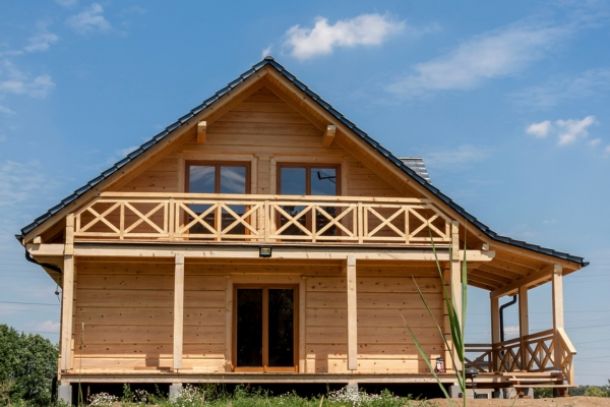Building a Custom Wooden Home: DIY Insights
Building a Custom Wooden Home: DIY Insights
Designing and constructing a custom wooden home is a challenging yet fulfilling project that allows you to express your creativity while embracing sustainable building practices. This article provides a deep dive into DIY insights, offering expert advice and practical steps to help you build a custom wooden home that meets your specific needs and aesthetic preferences.
Introduction
Custom wooden home building is a unique blend of art, engineering, and personal expression. This guide is aimed at DIY enthusiasts who want to create a home that reflects their lifestyle and values. With a focus on cost-effective methods, eco-friendly materials, and personalized design choices, the following insights will help you navigate the complexities of building a custom wooden home.
Initial Concept and Design
The process begins with a clear conceptualization of your dream home. Gather inspiration from various sources such as architectural magazines, online galleries, and local wooden homes. Develop a vision that includes room layout, architectural style, and special features such as outdoor decks or integrated green spaces.
Invest time in drafting detailed blueprints or working with a designer to translate your vision into concrete plans. Consider factors like natural lighting, spatial flow, and connectivity between different areas of the house. A well-conceived design not only enhances the aesthetics but also optimizes functionality and energy efficiency.
Budgeting and Material Sourcing
A custom project requires a realistic budget that accounts for every phase of construction. Outline your expenses—materials, tools, labor (if hiring assistance), permits, and contingency funds for unforeseen issues. Transparency in budgeting ensures that you can manage costs without compromising on quality.
Material selection is critical. Choose high-quality, treated lumber to ensure durability. Custom wooden homes often benefit from unique wood species like cedar, oak, or even reclaimed wood, each offering distinctive textures and colors. Sustainable sourcing, such as certified or reclaimed wood, adds an eco-friendly dimension to your project. Additionally, explore modern eco-friendly products like recycled insulation and non-toxic finishes to enhance both performance and sustainability.
Preparing the Site and Laying the Foundation
Once your design and materials are in place, the next step is site preparation. Choose a plot that offers favorable soil conditions, proper drainage, and a layout that supports your home’s design. Clear the land and mark out the building area accurately.
The foundation is the cornerstone of your custom wooden home. Depending on the local climate and soil, select the most appropriate foundation type—be it a concrete slab, crawl space, or pier and beam. Proper excavation, leveling, and curing of the foundation are essential to ensure the stability of the entire structure.
Framing and Structural Integrity
Framing is the phase where the skeleton of your home takes shape. Utilize treated, high-quality lumber to construct the floor system, walls, and roof framework. Custom homes often include unique design elements such as vaulted ceilings or custom window shapes, so precision is key. Use modern tools to ensure accurate measurements and secure joints throughout the framing process.
Focus on integrating strong support systems, particularly around windows and door openings, to ensure long-term structural integrity. Attention to detail during framing lays the groundwork for a home that not only looks exceptional but stands up to the challenges of time and nature.
Enhancing Energy Efficiency and Comfort
Energy efficiency is a significant consideration in custom wooden home construction. In addition to using high-quality insulation materials, design the home to maximize natural heating and cooling. Consider the orientation of windows and incorporate passive solar design elements that harness natural light and heat. Energy-efficient windows and doors further contribute to a comfortable, cost-effective living environment.
Modern heating, ventilation, and air conditioning (HVAC) systems can be seamlessly integrated into a custom design, ensuring that your home remains comfortable throughout the year while reducing energy consumption.
Interior Customization and Aesthetic Detailing
One of the most exciting aspects of building a custom wooden home is the freedom to personalize every detail. From the selection of interior finishes to custom cabinetry and unique design features, this phase allows you to infuse your personality into your living space.
Plan the interior layout carefully—consider open floor plans that promote a sense of space and connectivity. Choose finishes that highlight the natural beauty of wood, such as natural stains, eco-friendly paints, or handcrafted details. Small touches like custom lighting fixtures, built-in shelving, or accent walls can transform a standard design into a personalized masterpiece.
Finalizing the Build and Ongoing Upkeep
As construction nears completion, conduct thorough inspections of all structural and finishing elements. Check for any issues that may affect performance or aesthetics and address them promptly. Once your custom home is complete, establishing a maintenance schedule is crucial. Regular upkeep—such as resealing wood surfaces, cleaning gutters, and checking for moisture or pest issues—ensures that your home remains in pristine condition for years to come.
Conclusion
Building a custom wooden home is a rewarding project that marries creativity, sustainability, and technical skill. With careful planning, innovative design choices, and a commitment to quality craftsmanship, you can create a home that truly represents your vision. These DIY insights serve as a roadmap to help you navigate the complexities of custom home construction, empowering you to build a space that is not only beautiful and functional but also a lasting testament to your ingenuity and dedication.


